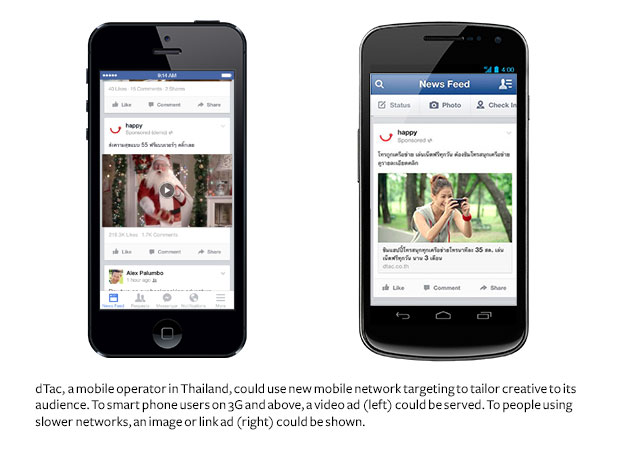Facebook will now allow advertisers to create targeted ads based on bandwidth in addition to device, the company announced today.
“People in high-growth countries around the world are coming online at a staggering rate, and a majority are accessing the Internet via mobile networks,” writes Facebook’s spokesperson Brendan Sullivan in a blog post. “The flip side of this rapid change is that network speeds in high-growth countries can vary and infrastructure is constantly changing.”
It’s no secret that Facebook is expanding globally and fast. The company is picking up users in all corners of the world with tools like Internet.org, an initiative that connects people who don’t have Internet access to the web. Ultimately, the program gets more eyes in front of ads — and more revenue in Facebook’s pocket.
Much of that growth is also on mobile. This newly refined targeting ability allows advertisers to deliver the best quality ad for users depending on whether they’re using 2G, 3G, or 4G networks. Advertisers will be able to create ads that run smoothly for users on a feature phone with a 2G connection, as well as users with a smartphone on 4G.


